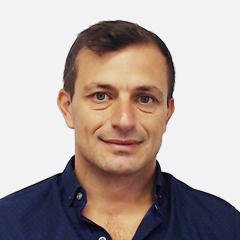Related Research Articles

Buenos Aires, officially the Autonomous City of Buenos Aires, is the capital and largest city of Argentina. The city is located on the western shore of the Río de la Plata, on South America's southeastern coast. "Buenos Aires" can be translated as "fair winds" or "good airs", but the former was the meaning intended by the founders in the 16th century, by the use of the original name "Real de Nuestra Señora Santa María del Buen Ayre", named after the Madonna of Bonaria in Sardinia, Italy.

SIL International is a evangelical Christian non-profit organization whose main purpose is to study, develop and document languages, especially those that are lesser-known, in order to expand linguistic knowledge, promote literacy, translate the Christian Bible into local languages, and aid minority language development.

Hispanic America is the portion of the Americas comprising the Spanish-speaking countries of North, Central, and South America. In all of these countries, Spanish is the main language, sometimes sharing official status with one or more indigenous languages, or English and Roman Catholicism is the predominant religion.

The Caddoan languages are a family of languages native to the Great Plains. They were spoken by tribal groups of the central United States, from present-day North Dakota south to Oklahoma. In the 21st century, they are critically endangered, as the number of native speakers has declined markedly.
Lyle Richard Campbell is an American scholar and linguist known for his studies of indigenous American languages, especially those of Central America, and on historical linguistics in general. Campbell is professor emeritus of linguistics at the University of Hawaii at Manoa.
Guaicuruan is a language family spoken in northern Argentina, western Paraguay, and Brazil. The speakers of the languages are often collectively called the Guaycuru peoples. For the most part, the Guaycuruans lived in the Gran Chaco and were nomadic and warlike, until finally subdued by the various countries of the region in the 19th century.
The Kitsailanguage is an extinct member of the Caddoan language family. The French first record the Kichai people's presence along the upper Red River in 1701. By the 1840s Kitsai was spoken in southern Oklahoma, but by the 1930s no native speakers remained. It is thought to be most closely related to Pawnee. The Kichai people today are enrolled in the Wichita and Affiliated Tribes, Waco and Tawakonie), headquartered in Anadarko, Oklahoma.
The Mocoví language is a Guaicuruan language of Argentina spoken by about 3,000 people, mostly in Santa Fe province.
The ethnography of Argentina makes this country, along with other areas of relatively modern settlement like United States, Canada, Brazil, Australia or New Zealand, a crisol de razas, or a melting pot of different peoples. In fact, immigration to Argentina was so strong that it eventually became the country with the second highest number of immigrants, with 6.6 million, second only to the United States with 27 million, and ahead of such other immigratory receptors such as Canada, Brazil and Australia.
Pilagá is a Guaicuruan language spoken by 4,000 people in the Bermejo and Pilcomayo River valleys, western Formosa Province, in northeastern Argentina.
Eastern Bolivian Guaraní, known locally as Chawuncu or Chiriguano (pejorative), is a Guaraní language spoken in South America. In Bolivia 33,670 speakers were counted in the year 2000, in the south-central Parapeti River area and in the city of Tarija. In Argentina, there were approximately 15,000 speakers, mostly in Jujuy, but also in Salta Province, and 304 counted in the Paraguayan Chaco.
Mochoʼ or Motozintleco is a moribund Mayan language spoken by the Motozintleco people of Chiapas, Mexico. It is part of the western branch of Mayan languages. Mochoʼ speakers refer to their own language as qatô:k, which means 'our language'. Mochoʼ has a dialect called Tuzantec spoken in Tuzantan, Chiapas.

Sechura–Catacao is a proposed connection between the small Catacaoan language family of Peru and the language isolate Sechura (Sek). The languages are extremely poorly known, but Kaufman (1990) finds the connection convincing, Campbell (2012) persuasive.
Alfredo Da Silva was a painter, graphic artist, and photographer, known for his abstract expressionism. He came to international prominence in 1959 and remained so until his death in 2020.

Argentines (also known as Argentinians or Argentineans; in Spanish argentinos or argentinas are people identified with the country of Argentina. This connection may be residential, legal, historical or cultural. For most Argentines, several of these connections exist and are collectively the source of their being Argentine.
Jorge Eduardo Wright was an Argentinian mycologist. Born in Buenos Aires, he graduated from the University of Buenos Aires in 1949. He was awarded a Latin American Guggenheim Fellowship and studied under Alexander H. Smith at the University of Michigan, under whom he received his Master of Science degree in botany in 1955. A year later he was awarded his doctorate from the University of Buenos Aires based on his research on the Gasteromycetes and other Basidiomycetes. Wright became a full professor in systematic botany at this university in 1960, a position he held until his retirement in 1988. During his career, he published over 120 scientific articles and several books.
Alexander Lesser (1902–1982) was an American anthropologist. Working in the Boasian tradition of American Cultural Anthropology, he adopted critical stances of several ideas of his fellow Boasians, and became known as an original and critical thinker, pioneering several ideas that later became widely accepted within anthropology.

Miguel Ángel Asturias Rosales was a Nobel Prize-winning Guatemalan poet-diplomat, novelist, playwright and journalist. Asturias helped establish Latin American literature's contribution to mainstream Western culture, and at the same time drew attention to the importance of indigenous cultures, especially those of his native Guatemala.

Eduardo "Bali" Bucca is an Argentine physician and politician of the Justicialist Party. He served as a National Deputy from 2017 to 2021, elected in Buenos Aires Province, and as intendente (mayor) of San Carlos de Bolívar from 2011 to 2017.

Alejandro Esteban "Topo" Rodríguez is an Argentine politician, currently serving as National Deputy representing Buenos Aires Province. A member of the Justicialist Party, Rodríguez was elected in 2019 for the Federal Consensus coalition. He previously served as Minister of Agrarian Affairs of Buenos Aires Province in the administration of Governor Daniel Scioli.
References
- ↑ "John Simon Guggenheim Foundation - Salvador Bucca". gf.org. Retrieved 23 June 2016.
- ↑ "Archive of Indigenous Languages of Latin America". utexas.org. Retrieved 8 November 2017.
- ↑ "Lenguas Indígenas". caicyt-conicet.gov.ar. Retrieved 23 June 2016.